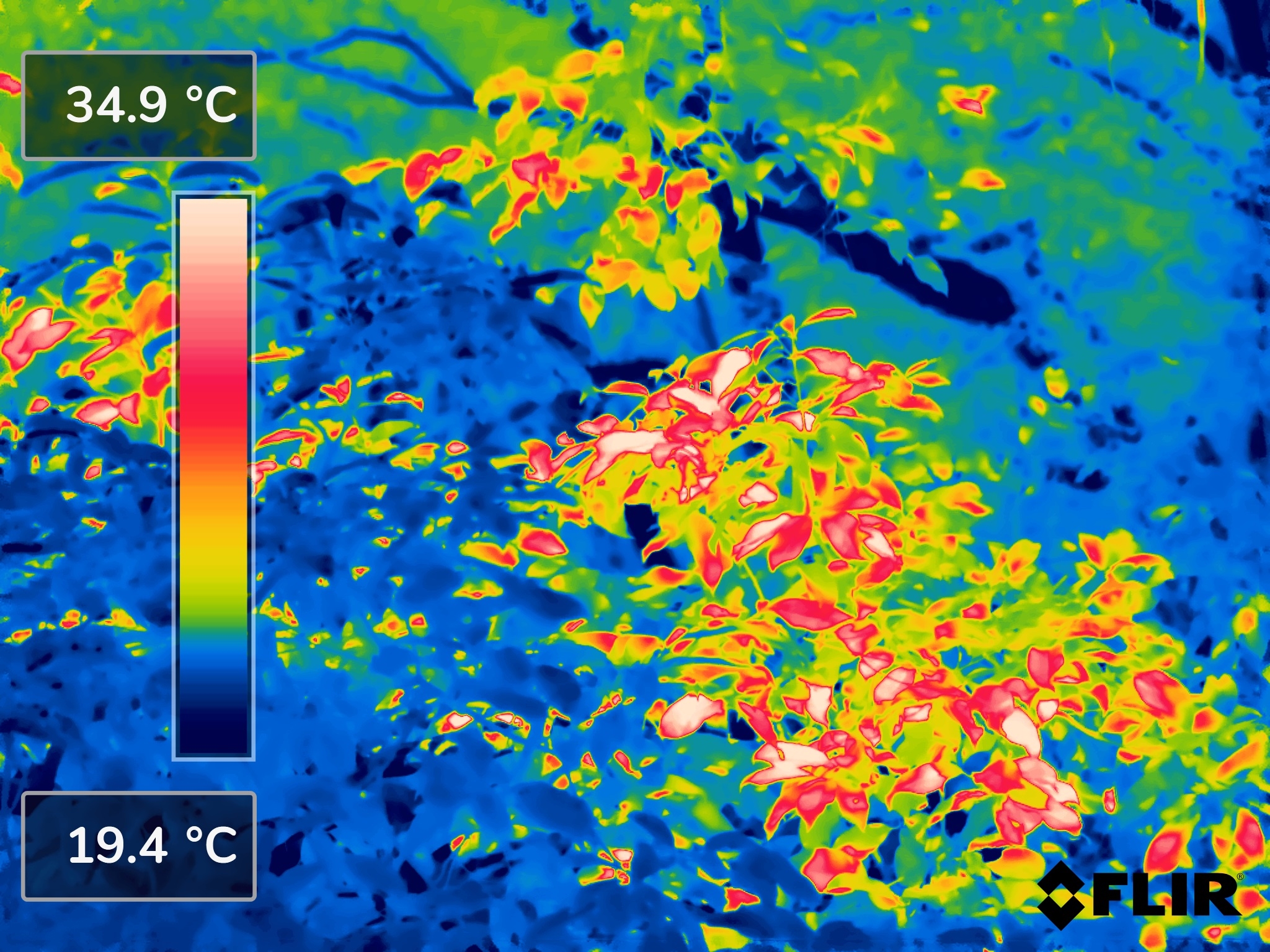Media release
From:
PhD candidate Kali Middleby and Research Fellow Dr Alex Cheesman from James Cook University’s Centre for Tropical Environmental and Sustainability Science took part in the study. Ms Middleby said the research combines satellite thermal and on-ground warming data from across the world’s tropical forests.
“Sunlit leaves in forest canopies can be much hotter than the surrounding air temperature. When these temperatures surpass their tolerance threshold it leads to leaf death. This study shows that occasionally tropical leaves reach and exceed the temperatures at which they can no longer function,” said Ms Middleby.
She said lead author Dr. Christopher Doughty from Northern Arizona University and the team were able to build a comprehensive understanding of current tropical forest leaf temperatures and model how they may be expected to change given ongoing anthropogenic global warming.
“We were really surprised that when we warmed leaves by 2, 3, or 4 °C, the highest leaf temperatures actually increased by 8 °C. This shows a concerning non-linear feedback that we were not expecting,” said Dr. Doughty.
He said more than 1% of the leaves in the canopy warming experiments exceeded critical temperature thresholds, estimated at 46.7 °C, at least once a year, increasing the percentage of leaves that surpass this threshold currently by two orders of magnitude.
Dr Cheesman said under the most likely model, tropical forests could withstand up to 3.9 °C of additional climate change-driven warming. However, “Temperature rises above 3.9 °C are expected under the ‘do nothing’ global climate change scenario pathways,” said Dr Cheesman.
“Our model projections are not destiny,” said Dr. Doughty. “They suggest that with some basic climate change mitigation, the tropics can avoid this fate. The worst-case scenarios are more than preventable and the world has the opportunity to act now,” said Dr Doughty.



 Australia; International; NSW; QLD
Australia; International; NSW; QLD



